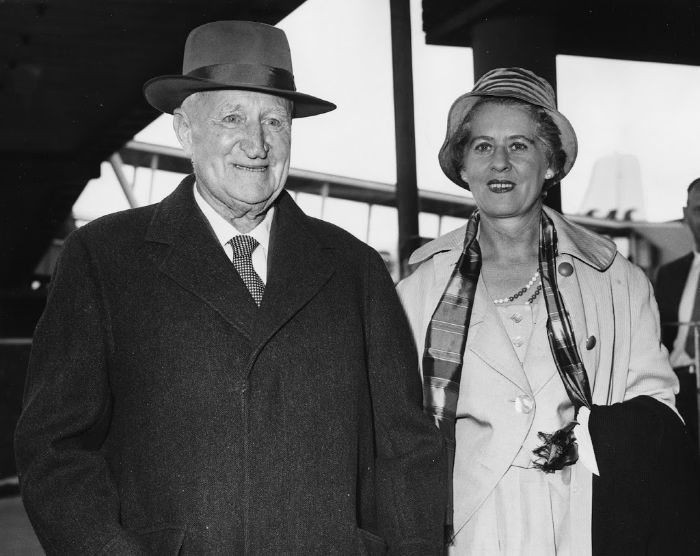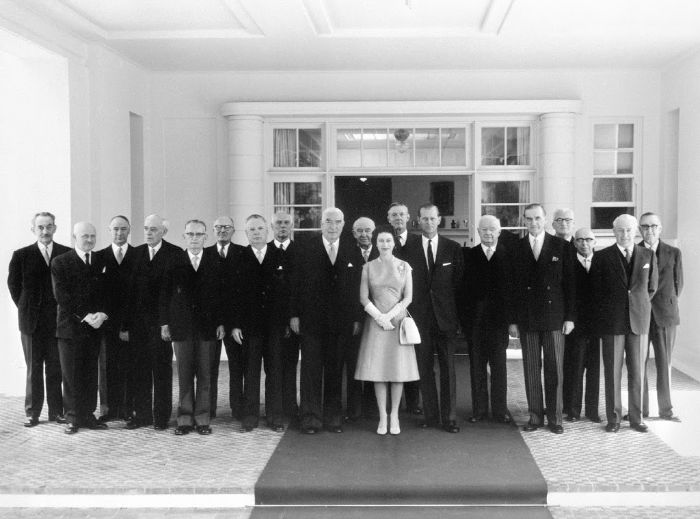
You’d be forgiven for thinking that Prime Minister Scott Morrison must have one of the shortest ever tenures in the top job, having only taken over from Malcolm Turnbull at the end of August.
Having served 119 days as PM up to now, Morrison is still relatively new to the job but he is already far from being able to boast the shortest prime ministership in Australian political history.
ScoMo should be safe in The Lodge for at least another four months, providing there isn’t another spill in the Liberal partyroom before May’s federal election. However if things don’t go Morrison’s way in May, he will still have served longer in the top job than five former PMs, with one boasting an incredibly brief prime ministership of just eight days.
The award for the shortest ever stint in office by an Aussie prime minister goes to Frank Forde, who held onto the top job for just eight days between July 6-13 in 1945.
While most prime ministers earn the title through election, Forde only landed the job after his predecessor John Curtin passed away suddenly, just months after being diagnosed with heart disease.
On an overseas trip in San Francisco at the time of Curtin’s death, Forde returned to Australia and was appointed as prime minister straight after a memorial service at Parliament House in remembrance of his former boss. The posting was only temporary though, until a leadership ballot could be held at the Labor party’s next caucus meeting.
Little over a week after inheriting the party leadership, Forde was beaten in a vote by Treasurer Ben Chifley who became the 16th prime minister of Australia with Forde as his deputy.

Earle Page takes the number two spot in this list, with a prime ministership that lasted just 19 days. As leader of the Country Party, Page brought his party into a coalition with the United Australia Party, acting as deputy PM under the leadership of Joseph Lyons.
Following the sudden death of Lyons in 1939 though, Page saw himself elevated to the role of caretaker prime minister, until the United Australia Party were able to elect a new leader.
Page lasted just three weeks at the top though before he lost the job to Robert Menzies – also losing his role as party leader – after launching a verbal attack on Menzies in the lower house, accusing Australia’s longest-serving prime minister of “cowardice” for failing to serve in World War One, according to national archives.
John McEwen’s entry into The Lodge happened in perhaps the most peculiar circumstances of any other former leader, as he assumed interim leadership following the disappearance of Liberal Prime Minister Harold Holt in 1967, who was presumed dead after he vanished whilst swimming off the Victorian coast.
Despite being leader of the Country Party, McEwen bagged the top job after arguing that appointing another Liberal MP in the role would impact the fairness of the party’s upcoming vote for Holt’s replacement.
He served just 22 days as PM, holding office from 19 December 1967 to 10 January 1968 when he was replaced by newly appointed Liberal leader John Gorton. He then became the first ever deputy prime minister of Australia under Gorton.

Country Party leader Arthur Fadden was sworn in as prime minister on August 29 1941, following the resignation of United Australia Party’s Robert Menzies, concluding Menzies first stint as PM.
However Fadden’s coalition lasted just 40 days with him likening his time as prime minister to “the biblical flood” as it had “lasted for 40 days and 40 nights” in his letter of resignation to the governor-general.
He resigned after his budget was defeated in a vote in the House of Representatives, recommending that Labor leader John Curtin be sworn in as prime minister in his place.
If Morrison was to be booted out of office today he would still beat the last entry in this list, Chris Watson, who spent a grand total of 113 days as the leader of the country between April and August 1904.
While he might have enjoyed a short stint at the top, Watson is more widely remembered for a far more positive reason as he remains the youngest ever prime minister, having been elected at the age of just 37. Watson’s election was also significant as it marked the formation of Australia’s first ever Labor government.
According to the records held by National Archives Australia, Australia’s third prime minister was described as “the perfect picture of the statesman” by his then-External Affairs Minister WM Hughes.
Despite being seemingly fit for the job though, Watson actually resigned as prime minister after losing the majority in the House of Representatives. He was succeeded by George Reid, leader of the Free Trade Party.